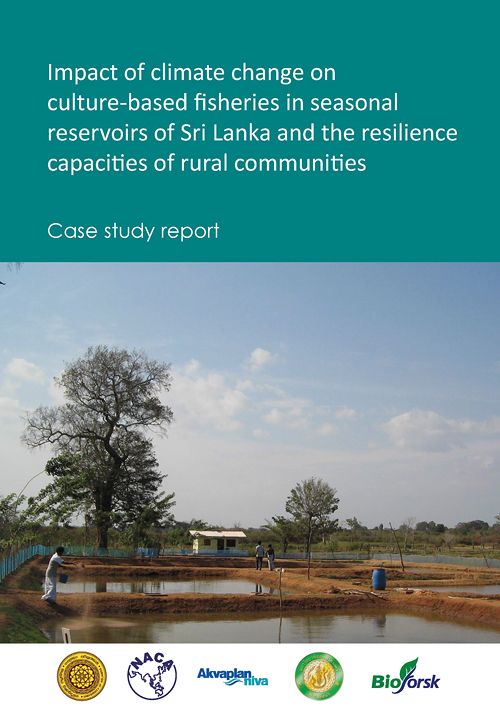Impact of climate change on culture-based fisheries in seasonal reservoirs, Sri Lanka
4 October 2012 | 3033 Downloads | .pdf | 1.02 MB | Emerging Global Issues, Culture-based fisheries, Inland aquaculture, Sri Lanka, Environment and Sustainability
Culture-based fisheries (CBF) are an aquaculture activity performed in natural and quasi-natural water bodies. In Sri Lanka two types of reservoirs are used for CBF development. First group of reservoirs is called as minor perennial reservoirs and the other group is called as seasonal (non-perennial) reservoirs. In minor perennial reservoirs, heavy draw-down can be observed in the dry seasons of the year and water retains only for few months in seasonal reservoirs. Water availability of these reservoirs depends on the rainfall received from two monsoons and inter-monsoons. As such, changes in the rainfall pattern due to the climate change impacts caused significant implication on the sustainability of CBF in seasonal reservoirs. Climate change will impact on two main sectors of the CBF; fingerling production and marketing as well as grow out period of the stocked fingerlings in seasonal reservoirs. Therefore, prediction of adverse impacts of climate change, identification of potential impacts and improving resilience capacity of vulnerable communities are indispensable for the sustainability of seasonal reservoir CBF in Sri Lanka.
Present study attempts to identify the changes of reservoir filling patterns in the scenario of climate change and to identify the water retention period of seasonal reservoirs in Sri Lanka. Water availability in selected seasonal reservoirs in five administrative districts was investigated from 1960 to 2010. Daily rain fall data were obtained from closest rain gage station of the Meteorological Department to each reservoir. GIS techniques were used to demarcate catchment characteristics and other useful information such as command area, slope of the catchment etc. A questionnaire survey was carried out to identify the common agricultural practices under each and every reservoir and to determine the irrigation strategies and water release. Also the questionnaire survey attempted to gather information on farmers’ experiences of recent climate change implications on the rainfall pattern and water availability for agriculture and CBF. Hydrological model HEC-HMS 3.4 was used together with a water balance model to predict the daily fluctuations of reservoir volumes from 1960 to 2010 in each reservoir.
Frequent fluctuations in reservoir volumes can be observed in all the reservoirs in the sample compared to 1960s. Results revealed that there is high drawdown in the recent past in the seasonal reservoirs compared to 1960s. A forward shifting pattern of drawdown is identified in the recent past due to altered rainfall patterns. These changes have affected the culture season and the duration of the culture period of stocked fingerlings in the reservoirs. Also it has created uncertainty on fingerling production and their market demand. Shifting rainfall may create non-availability of fingerlings at the correct time for stocking. Marketing difficulties can be expected due to shortened culture period. Collectively these impacts may severely affect the sustainability of CBF in seasonal reservoirs.
Corrective measures and policy decisions have to be identified to mitigate the climate change impacts on vulnerable CBF communities in seasonal reservoirs in Sri Lanka. Current study has identified some policy briefs to mitigate the expected negative impacts and consultative workshops were arranged to take farmers perceptions on proposed policy briefs. The proposed policy briefs which were agreed upon by the farmers are (i) climate change has shifted the filling pattern of the seasonal reservoirs so that changes in stocking pattern are needed in culture based fisheries, (ii) long term simulation of water volumes of seasonal reservoirs and those associated in the cascades should be combined with other models to predict reservoir filling patterns, (iii) farmers are reluctant to stock fish in reservoirs until spilling off has completed, (iv) fish can be stocked in cages in the reservoir and release them after spilling off the reservoir, (v) alternative means of stocking fish fingerlings reared by rural communities should be sought, (vi) improved water management strategies should be adapted by the paddy farming communities to improve the water retention in reservoirs, (vii) identification of alternative stocking sources and (viii) improvement of value addition and product development for harvested fish.
Creative Commons Attribution.

